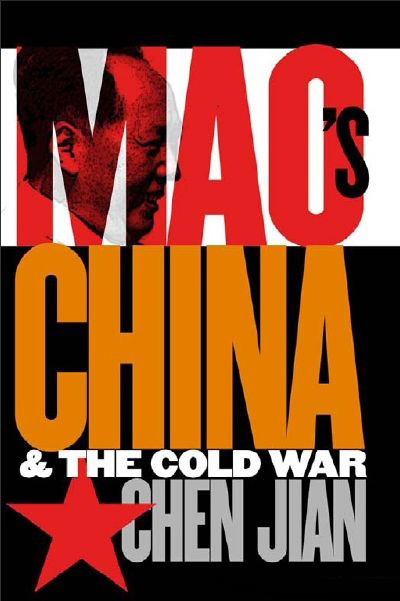Any person with the most basic knowledge of the Cold War will realize that most historical analyses are fixated on the relationship between the United States and the Soviet Union. Most of what it is written is also from a nauseatingly repetitive American, or “Western,” perspectives. However, since the end of the Cold War in the early 1990s, there has been a surge of Western interest in the mysterious “view-from-the-other-side” stories of the “Communist Cold War experience.” In that respect, historian Chen Jian’s Mao’s China and the Cold War is a fresh breakout from the traditional USSR-versus-USA Cold War episodes.

In Mao's China and the Cold War, Chen interprets the course of Sino-American relations between 1945 and 1972 through nine historical cases ranging from the First Indochinese War to the Ping-Pong Diplomacy, using newly accessible sources taken from Chinese archives. These provide some insight into the visions and aspirations of the Chinese leaders of the era and in particular, those of Chairman Mao Zedong. Although these studies are not definitive, they begin to illuminate the reasons for Chinese perceptions and diplomatic behavior during the events presented.
Particularly enlightening is the presentation of Mao’s chief concern for China as a country: how to carry on the “Perpetual Revolution” inside to oppose Western “Imperialism.” These motifs repeat themselves time and time again, from Mao’s decision to intervene in the Korean War in the 1950s to China’s disagreement and subsequent conflict with the Soviet Union. Also apparent is the sheer strength of Mao’s personality and influence – perhaps comparable to (or even greater than) the influence commanded by such individuals as Franklin D. Roosevelt, Adolf Hitler or Josef Stalin. Through all this, Chen makes an interesting point: despite the lack of attention on Chinese policies during the Cold War, China actively pursued – and played – a large role in the Cold War.
According to the author, China occupied a unique position in the Cold War because it was the object of both the affection and hostility of the two major powers. Mao's ultimate goal was to assert China's independence by placing China in a central position in world revolutionary politics. This also emphasizes the dual (even paradoxical) nature of the Chinese Communist Revolution: a movement that was both “Chinese” and “Communist” in nature. In other words, Mao effectively reined the Chinese populace’s nationalist sentiment through decisive and aggressive foreign policy maneuvers, and used it to promote his socialist ideals within. This brings the reader to Chen’s final point; ideology is important to any history of the Cold War.
Mao was successful in many ways; he managed to project China onto the world stage as a major player in many key events. However, despite Mao’s – and China’s - emphasis on domestic mobilization and revolution, the results (culminating with the Great Leap Forward and the Cultural Revolution) were not so successful. Mao’s stated desire to establish China as a fountainhead for universal equality and prosperity did not materialize. Instead, the Chinese Communist Party’s failure to implement its ideology led to a crisis of faith in the early 1970s and the massive Tiananmen protests of 1989.
Although Mao’s legacy is still apparent in modern China, for Chen today’s China is a continuation of this ideological crisis. Though the obliteration of Maoist egalitarianism has resulted in a rich and powerful nation, China is now as far from its revolutionary roots as any Western economy is from “Marxism-Leninism.” Chen is quite brutal in his analysis of modern China: having denied its own revolutionary roots, the Chinese Communist Party has no choice but to emphasize its nationalist claims if it is to strengthen its legitimacy. In an ironic turn of events, today’s China seems to be closer to what the nationalist Chiang Kai-shek envisioned than the one that his opponent Mao so yearned for.

